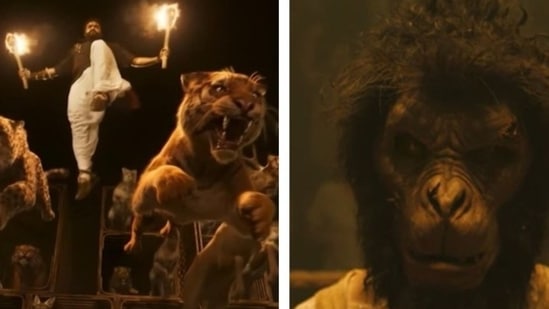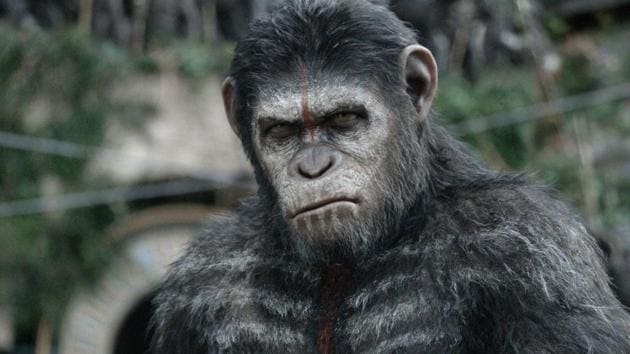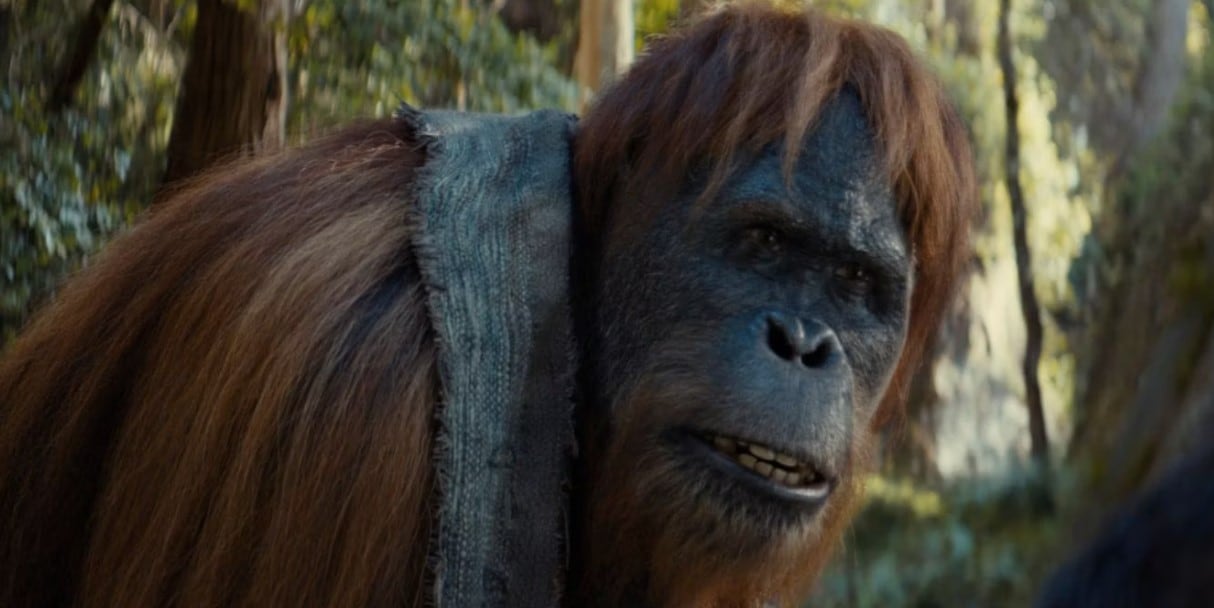Table of Contents
Evolution has been at the heart of the Planet of the Apes. In an exclusive interview with Erik Winquist, the VFX supervisor of the franchise, we discuss exactly that – evolution of the film series, of the VFX technology that’s crucial to it, of the depiction of apes on screen, and of cinema’s relationship with that next big breakout thing called Artificial Intelligence.

(Also Read – Kingdom of the Planet of the Apes review: Visually stunning film carries forward legacy of the trilogy)
Along with the Planet of the Apes franchise, you’ve also worked on Peter Jackson’s King Kong (2005) and Brad Peyton’s Rampage (2018). What is it about apes that make them such a fascinating part of our collective imagination?
The obvious thing is they’re so closely related to us. We can tell stories that are of a very human nature, but without visual humans on screen. I think we can relate to those animals in particular because they’re separated only by 2% of our DNAs. Anyone who’s visited a zoo and locked eyes with an orangutan or a chimpanzee, you can tell there’s a fundamental connection there. It’s hard to describe, but it’s unmistakable.

You’ve been associated with this franchise since its first reboot instalment, Rise of the Planet of the Apes (2011). How has your process evolved with these four movies?
The thing that’s been really great to see is the progression of what the technology enables as we make it through the films. We recently watched Rise of the Planet of the Apes. At that time, we thought wow, it looks so amazing! And now, we feel it looks a little dated. As rendering technology and animation technology progress, we’re leaps and bounds ahead now. It’s much more realistic, more engaging, more believable than it was.
The latest instalment, Kingdom of the Planet of the Apes, marks the dawn of a new era in the franchise. How challenging was it for you to design its aesthetic?
Getting into Kingdom, we’re no longer in that soft lighting, Canadian rainforest-San Francisco kind of vibe. The lighting style and the camera style are much more controlled. Now, we’re in this bright sunshine with handheld cameras. It’s been nice having those changes as we’ve gone from film to film as it’s helped keep it fresh for us too.
We introduced 12 new hero characters in this part, and all of them speak. Earlier, they mostly had sign language. So the requirement of having high-fidelity facial animation was more challenging in this one. There’s more talking in this one than there probably is in the entire other three films. Secondly, we got two big sequences underwater. So now, we had to deal with what happens when you put an ape in that water, the requirement of the simulations of how their hair gets affected when they’re in water.

Speaking of underwater, you also worked on James Cameron’s 2009 watershed fantasy Avatar. What did you pick up from that experience that you probably used in this franchise?
Jim Cameron probably knows more about everyone’s jobs than they do in the entire filmmaking process. His depth of knowledge, his eye is quite remarkable. He’s raised the game for all of us. To keep asking yourself, “What can we do to make this better?” You need to meet the expectations of what came before you and aim to surpass that with the next one.
I read that you clicked an orangutan’s picture in Germany for your inspiration for Raka in this film. How much of your process is in the studio and how much of it is in on ground?
By the time we’re getting things turned over to us, we’re very studio-based. The shoot is done and we’re not out in the wild anymore. We’re doing a lot of our recce, scouting or research via the internet. It was via image search that we tracked down the chimpanzee that was a reference for Ceaser or the orangutan that was the reference for Raka.
But for any of the films that I’m involved with, I like to photograph as much as I can. For example, for the seagulls that we see in the bridge sequence, we went down to a beach in Wellington and actually photographed them after baiting them with fish. We put those in the movie instead of doing highly detailed seagull design for just one shot. Sometimes, you can’t find what you need on YouTube!

Is there a VFX technology that you believe is going to become huge in the next 5 years?
Whether it’s coming or it’s already here, there’s so much talk about AI (Artificial Intelligence). Where machine learning is going to fit into the VFX or the filmmaking ecosystem is the big question. There are so many of these tools to save us time. But I guess the focus is harnessing that as a creative tool, and not using it as a replacement for creators. There’s an inherently human element to the filmmaking process that can’t be replaced by “AI,” whatever that means. I think we’d lose something tremendous.
We’re using machine learning on this one as a way to record footage of the actors’ faces that’s processed in a machine learning solver, which gives animators the starting point for the work they have to do. So they can focus all their attention on the emotional nuances, and not the foundation of facial performance. That’s just one example of many.
Do you get bummed when someone compliments you on the VFX? Because practically, good VFX is supposed to be invisible.
We’re quite tickled when nobody notices we did something. That means we did our job successfully. A lot of the work that we tend to do, everybody knows that what they’re watching couldn’t be real, like there’s a talking ape on the screen right now. But somehow they’re completely drawn in. That’s what I find quite satisfying. With this film, in particular, there’s a lot of feedback on the lines of how did you make that orangutan look so realistic. They say two minutes into the movie, I completely got lost, I forgot I was watching digital characters. That’s great to hear.

Finally, is there any Indian film you’ve seen that has impressed you with its VFX?
I think I’d say obviously, RRR, in terms of the sheer quantity of craziness coming off of screen. That was fun to see. I was very impressed, in terms of just the film, by Dev Patel’s Monkey Man. This was the year of the monkey apparently. That was his first directorial movie. It was just a brilliant, fun movie, with obviously some fun VFX moments here and there too. Good stuff!
Kingdom of Planet of the Apes is now streaming in India on Disney+ Hotstar.

